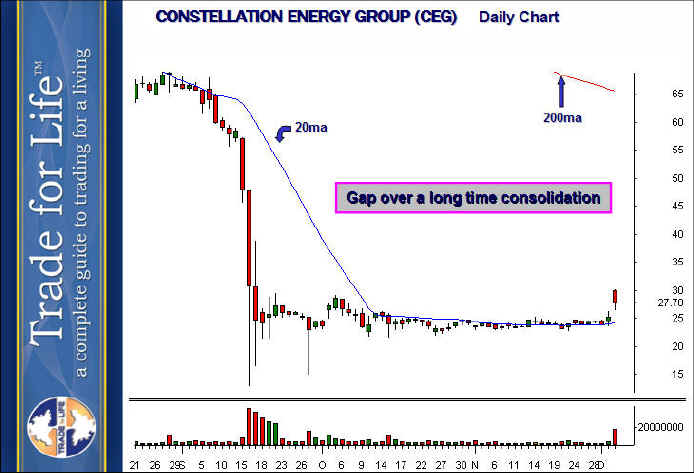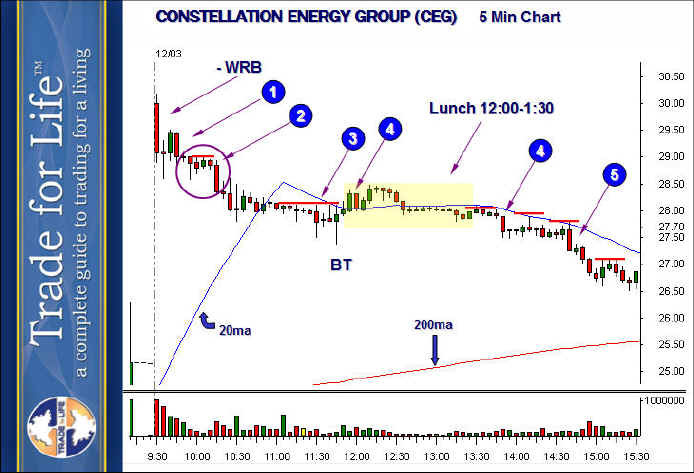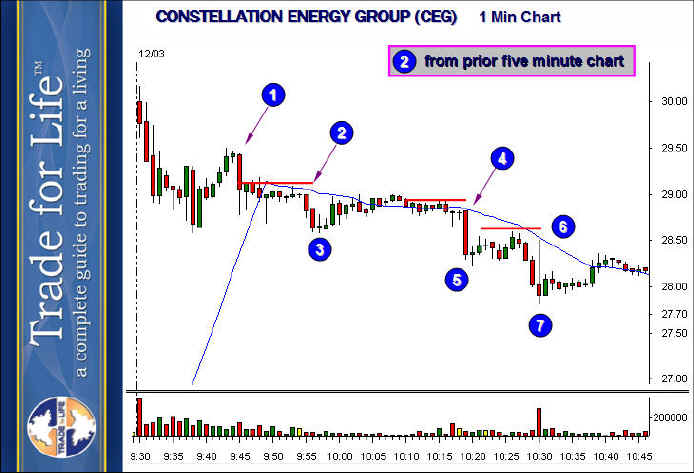
This stock gapped over a long time daily base, clearing all resistance from the base. Playing ‘bases’ is probably one of the most common plays, and touted as an easy one. If you play them, you know they are not easy. Most breakouts actually fail, the way most traders play them. The secret here is to know the big picture concept. For this play, it is to know that the gap will usually pull in before it goes higher. A base this long is loaded with traders who are both long and short. On the gap, there are longs taking profits, and shorts that are covering. There are new traders getting long, and new traders getting short. One cannot predict whether the bulls or bears will be in power when the stock opens.
The clue that gives us odds on this base is the fact that this is a very bearish pattern overall. While the stock may have been ‘over sold’, it dropped very quick and consolidated near the lows. There are many traders who are long that are trapped inside this stock that are sick of being there and are anxious to sell on a quick move up. This stock gapped up five points that morning. This gave traders a reason to sell. More important, forget the rationale. If you study these, you will find that gap ups out of bearish bases are usually sold. Now, since this was going to be a day trade, we are only interested in what this stock will do on that one day. Over the next several days, it is quite possible the selling will stop and the stock will follow through and go higher. However, we do not care. Whether the stock sells off for the next two weeks, or just one day, there are high odds that the day of the gap will be bearish. That is the strategy; to short the gap out of a bearish base.

The wide bar often gets a strong countermove immediately following. So we wait for an entry in the form of a VCM sell set up or consolidation break down. We also want information that the bears are in control. We get that at ‘1’. The first counter rally attempt at ‘1’ becomes immediately reversed. As a matter of fact, if a sell set up forms in this area, it is often a good entry. The problem here was that the reversal came so fast there was no entry, not even on the one minute chart (shown below). However, after the event at ‘1’, we get a base forming just off the low of the red bar at ‘1’. This is both confirmation of weakness and makes for our entry. Everything inside the circle at ‘2’ is expanded and discussed in detail on the one minute chart, below. The entire process of the exact entry, and the addition of more shares are discussed on a zoomed down level on the one minute chart.

We cannot enter at ‘1’. At the moment it formed, it was bullish. It was the failure of this move to go higher that confirms our decision to short. It is the base that forms going into ‘2’ that we want. It is a tight base, and the stock has proven its weakness. As soon as the first red bar at ‘2’ drops below the lows of the last five bars of the base, we short. The stop is over the top of the base at ‘2’.